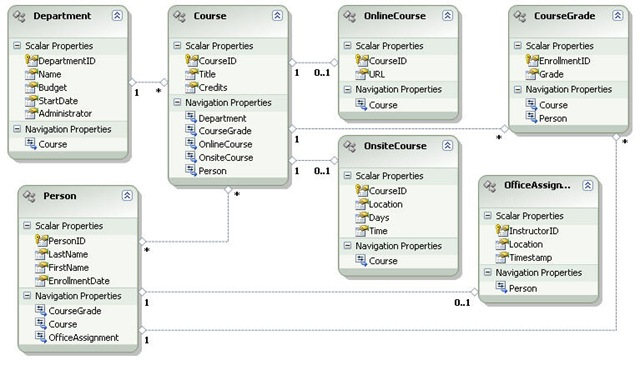Models
Modelling abstracts the data and associated processes to a level where they can be used in all parts of an organisation.
Without a modelling capability organisations often begin to build up architectural debt by creating individual solutions with little consideration of the impact of enterprise-wide change.
Models operate at three levels: conceptual, logical and physical. Conceptual and logical models are primarily focused on analysis while physical is focused on design.
Data modelling is a function of data architecture and requires specialist skills. A modelling approach is guided by its purpose and deliverables. the primary purpose of a model is to communicate between people with different roles and experiences to formalise terms to help understanding and to fix scope.
The simple example of a conceptual model below was sourced from Microsoft to demonstrate how entities and relationships are built up:

Data modelling is an integral part of any wider data management capability. Done properly it translates and maintains the integrity of business requirements to database tables and views. Modelling at conceptual levels ‘brings data to the masses.’ Once there is a business view of data it has wide-ranging use and utility at all levels of the organisation.
References
- Industry Standards: Universal Modelling Language(UML) (url)
- Object Role Modelling(ORM) (url)
- Brief summary of conceptual, logical and physical models: Data Model (url)
